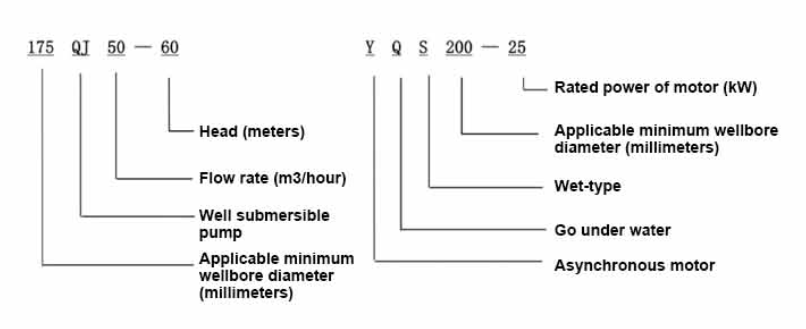دسمبر . 27, 2024 09:48 Back to list
submersible pump sizing calculator
Understanding Submersible Pump Sizing A Comprehensive Guide
When it comes to selecting the ideal submersible pump for your needs, size matters significantly. Proper sizing ensures that your pump operates efficiently, effectively, and lasts for years without unnecessary wear. In this article, we'll delve into the factors influencing submersible pump sizing, how to calculate required specifications, and the benefits of using a submersible pump sizing calculator.
What Is a Submersible Pump?
A submersible pump is a type of pump that is designed to be submerged in a fluid. Unlike traditional pumps that draw water upward, submersible pumps push fluid to the surface. They are commonly used to drain wells, sewage, and, in some cases, to provide irrigation. Their design reduces the risk of cavitation and can handle various types of fluids, making them suitable for different applications.
Why Is Sizing Important?
Proper sizing is critical for several reasons
1. Efficiency An undersized pump will struggle to meet the required flow rate, leading to higher operational costs and potential damage. Conversely, an oversized pump may lead to excessive energy consumption and can contribute to wear and tear.
2. Performance A well-sized pump performs optimally without requiring excessive energy. This is crucial for applications where consistent delivery rates are necessary, such as irrigation or sewage systems.
3. Longevity Correct sizing minimizes the risk of overheating and mechanical failure, extending the pump's service life.
4. Cost-Effectiveness By ensuring the right size pump is selected, you can avoid the additional costs associated with energy overuse and frequent repairs.
Factors to Consider in Submersible Pump Sizing
When sizing a submersible pump, several key factors must be taken into account
1. Flow Rate (GPM) This is the volume of fluid that needs to be moved, typically measured in gallons per minute (GPM). Determine the required flow rate based on the system's demands.
submersible pump sizing calculator

2. Total Dynamic Head (TDH) This measures the total resistance that a pump must overcome, combining elevation gain, friction loss in the piping, and any additional pressure required. It's essential to accurately calculate TDH to ensure the pump can deliver the required flow rate.
3. Pump Type Different applications may require specific types of submersible pumps. For example, sewage pumps are designed for handling solids, while sump pumps are suitable for groundwater and clean water applications.
4. Fluid Characteristics The properties of the fluid being pumped (e.g., viscosity, temperature, presence of solids) can affect pump performance and should be considered in sizing.
5. Electrical Supply Consider the power source available. Submersible pumps can be powered by electricity, solar energy, or other means, and this can influence the choice of pump.
Using a Submersible Pump Sizing Calculator
To streamline the process of sizing a submersible pump, many manufacturers and suppliers offer online sizing calculators. These tools simplify the calculations by allowing users to input relevant data, such as flow rate, head pressure, and fluid characteristics. The calculator then recommends suitable pump models based on these inputs.
Steps to Use a Sizing Calculator
1. Input Required Flow Rate Start by entering the desired flow rate for your specific application.
2. Calculate or Input Total Dynamic Head Determine the TDH based on your system layout, including elevation and friction losses.
3. Specify Fluid Properties Input the characteristics of the fluid you will be pumping.
4. Receive Recommendations Based on your inputs, the program will generate a list of appropriate pump models and specifications.
Conclusion
Selecting the right submersible pump is critical for the success of your project, and proper sizing is at the heart of that selection. By understanding the various factors at play and leveraging a submersible pump sizing calculator, you can ensure optimal performance, efficiency, and longevity of your pumping system. Investing the time in correctly sizing your pump can lead to substantial savings and improved operational reliability, making it a crucial step in any fluid management system.
-
Submersible Water Pump: The Efficient 'Power Pioneer' of the Underwater World
NewsJul.01,2025
-
Submersible Pond Pump: The Hidden Guardian of Water Landscape Ecology
NewsJul.01,2025
-
Stainless Well Pump: A Reliable and Durable Pumping Main Force
NewsJul.01,2025
-
Stainless Steel Submersible Pump: An Efficient and Versatile Tool for Underwater Operations
NewsJul.01,2025
-
Deep Well Submersible Pump: An Efficient 'Sucker' of Groundwater Sources
NewsJul.01,2025
-
Deep Water Well Pump: An Efficient 'Sucker' of Groundwater Sources
NewsJul.01,2025
-
 Submersible Water Pump: The Efficient 'Power Pioneer' of the Underwater WorldIn the field of hydraulic equipment, the Submersible Water Pump has become the core equipment for underwater operations and water resource transportation due to its unique design and excellent performance.Detail
Submersible Water Pump: The Efficient 'Power Pioneer' of the Underwater WorldIn the field of hydraulic equipment, the Submersible Water Pump has become the core equipment for underwater operations and water resource transportation due to its unique design and excellent performance.Detail -
 Submersible Pond Pump: The Hidden Guardian of Water Landscape EcologyIn courtyard landscapes, ecological ponds, and even small-scale water conservancy projects, there is a silent yet indispensable equipment - the Submersible Pond Pump.Detail
Submersible Pond Pump: The Hidden Guardian of Water Landscape EcologyIn courtyard landscapes, ecological ponds, and even small-scale water conservancy projects, there is a silent yet indispensable equipment - the Submersible Pond Pump.Detail -
 Stainless Well Pump: A Reliable and Durable Pumping Main ForceIn the field of water resource transportation, Stainless Well Pump has become the core equipment for various pumping scenarios with its excellent performance and reliable quality.Detail
Stainless Well Pump: A Reliable and Durable Pumping Main ForceIn the field of water resource transportation, Stainless Well Pump has become the core equipment for various pumping scenarios with its excellent performance and reliable quality.Detail
